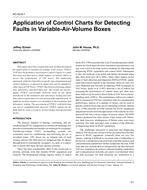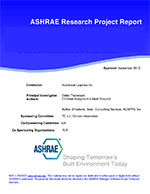The building sector of the U.S. currently consumes over 40% of the U.S. primary energy supply. Estimates suggest that between 5 and 30% ofany building’s annual energy consumption is unknowingly wasted due to pathologically malfunctioning lighting and comfort conditioning systems.This paper presents analytical methods embodied within useful software tools to quickly identify and evaluate selected building system faults thatcause large building energy inefficiencies. The technical contributions of this work include expert rules that adapt to HVAC equipment scale andoperation and methods for sorting fault signals according to user- defined interests such as annual cost of energy inefficiencies. These contributionsare particularly unique in their treatment of models and the careful consideration of user interests in fault evaluation. As a first step to developingthis general framework for fault detection, first-order faults such as simultaneous heating and cooling and imbalanced airflows within several largeair-handling units were targeted. Savings of around $22,500 were predicted when the fault of simultaneous heating and cooling occurred over anentire month in an air handler. An example of the potential energy savings in a large hospital that has been monitored. Yearly savings of around$24,000 were predicted by correcting the operation of the circulation pump in an air-handler heat recovery loop. User testing and experimentsshow that embracing uncertainty within HVAC fault detection and evaluation is not only paramount to judicious fault inference but it is alsocentral to gaining the trust and buy-in of system users who ultimately can apply fault detection information to actually fix and improve buildingoperations.
Citation: 2018 Annual Conference, Houston, TX, Conference Papers
Product Details
- Published:
- 2018
- Number of Pages:
- 9
- Units of Measure:
- Dual
- File Size:
- 1 file , 960 KB
- Product Code(s):
- D-HO-18-C015


